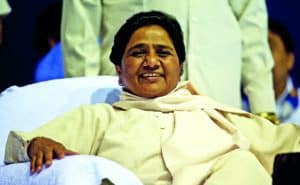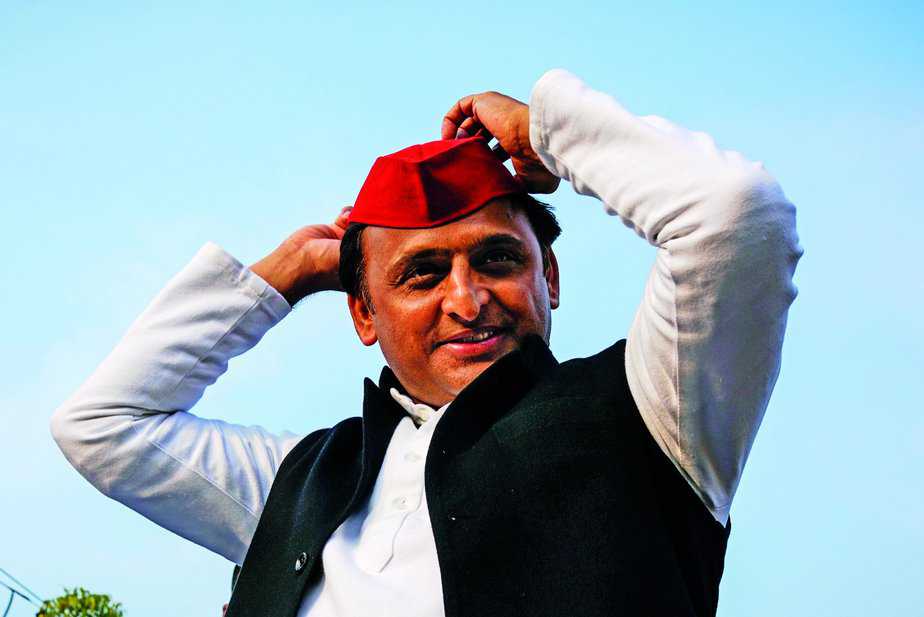Despite their hostile past, Mayawati’s Bahujan Samaj Party and Akhilesh Yadav’ s Samajwadi Party have come together to defeat BJP in Gorakhpur and Phulpur
Politics is the art of the possible. Sworn enemies become friends for political expediency. That’s what the saffron wave that has swept the whole country has forced many political outfits to do. Most recently, the diehard rivals of the Hindi heartland of Uttar Pradesh — Bahujan Samaj Party (BSP) and the Samajwadi Party (SP)—joined hands to contain the saffron surge. BSP has decided to support SP candidates in the Lok Sabha bypolls in Gorakhpur and Phulpur. It’s a small beginning, but could be a significant one. “We have not floated any candidate for Phulpur and Gorakhpur by-polls. Our party members will exercise their vote to defeat the BJP candidate,” Mayawati told media persons.
There is a distinct possibility that the Congress may also cooperate with the two regional parties to defeat the BJP. The combined opposition may cause real problems to the party in power. In 2014, the BSP, SP and Congress combined polled 49.83 per cent of votes against 42.6 per cent of BJP in UP. In the Assembly polls last year, the BJP’s voteshare dropped to nearly 40 per cent while the BSP, SP and Congress combined got about 50 per cent of votes, out of which BSP and SP got 22.2 and 21.8 percent, respectively.
This encouraging vote arithmetic has made two most unlikely people, Mayawati and Mulayam, come together. This is not unprecedented, though. A similar alliance happened in Bihar between Lalu Prasad Yadav’s RJD and Nitesh Kumar’s JD(U), which successfully prevented BJP from coming to power in 2015. It’s a different matter, though, that Nitesh Kumar two years later dumped RJD to ally with the BJP in what was dubbed a ‘political coup’.
In UP, such an arrangement is not unprecedented, either. Some 25 years ago, when the Ram Janmabhoomi issue was in currency to polarise Hindu votes, BSP and SP had come together successfully to keep the BJP at bay. Their popular slogan was: “Mile Mulayam Kanshi Ram, Hawa Mein Ud Gaye Jai Shri Ram”.
BSP and SP entered into a cosy arrangement to share power in UP, a coalition government was formed under Mulayam Singh Yadav. However, the honeymoon didn’t last long, within two years they parted ways in a fairly hostile manner. Mayawati’s life was in danger when she was literally held captive in a VIP guesthouse in Lucknow for hours by belligerent SP supporters. This was, by her own admission, one of the most humiliating moments in Mayawati’s political career. Friends became sworn enemies overnight and now the process has been reversed. Mayawati soon went on to form the government with the BJP’s support.
This was a long time ago; the dust of time has settled, old wounds have dried. The new challenges require different alignments and partnerships. SP under Akhilesh Yadav, the former chief minister of UP and Mulayam’s eldest son, entered into an alliance with Congress party in the UP Assembly elections last year, but to no avail. The BJP wave swept the state. But now, with just a year to go for the Lok Sabha elections, regional parties are weighing their options. The SP-BSP understanding, therefore, is a significant beginning.

Mayawati, after the two consecutive losses in the assembly elections, is a much-truncated political force. Though she has been able to retain much of her support base so far, she’s losing her grip and the BJP’s reaping the benefits. BSP cadres are despondent and disheartened. Many of the leaders have deserted the party. While Naseemuddin Siddiqui went to Congress, Swamy Prasad Maurya joined the BJP. Last year, Mayawati in dramatic move resigned from Rajya Sabha, complaining that her voice was being muzzled, nine months before her term was to end. For the first time in last two decades, despite securing one-fifth of the votes polled in UP, her party didn’t win a single seat in 2014.
The new alliance in the making between SP and BSP can been seen as coming together of two major groups, that of Muslims and Dalit. They both happen to be about 17 per cent of the population each, and together can be a formidable challenge to BJP. Muslims are under attack by cow vigilantism, love jihad and triple talaq issues, all seen as infringement on the religious rights. Not just Muslims, lately Dalits also have also been at the receiving end, the clashes during the celebrations of the Battle of Bhima Koregaon in Maharashtra was is not an isolated incident, there were many reported clashes between Jat and Dalits in the Haryana, Punjab and western Uttar Pradesh, murder of Dalit students and suicide of Rohith Vemula.
Given the possibility of a Dalit-Muslim alliance this patch-up between SP and BSP, burying old animosity, may prove to be a game changer. But, these are still early days and BJP resurgence on India’s political landscape remains unabated.





